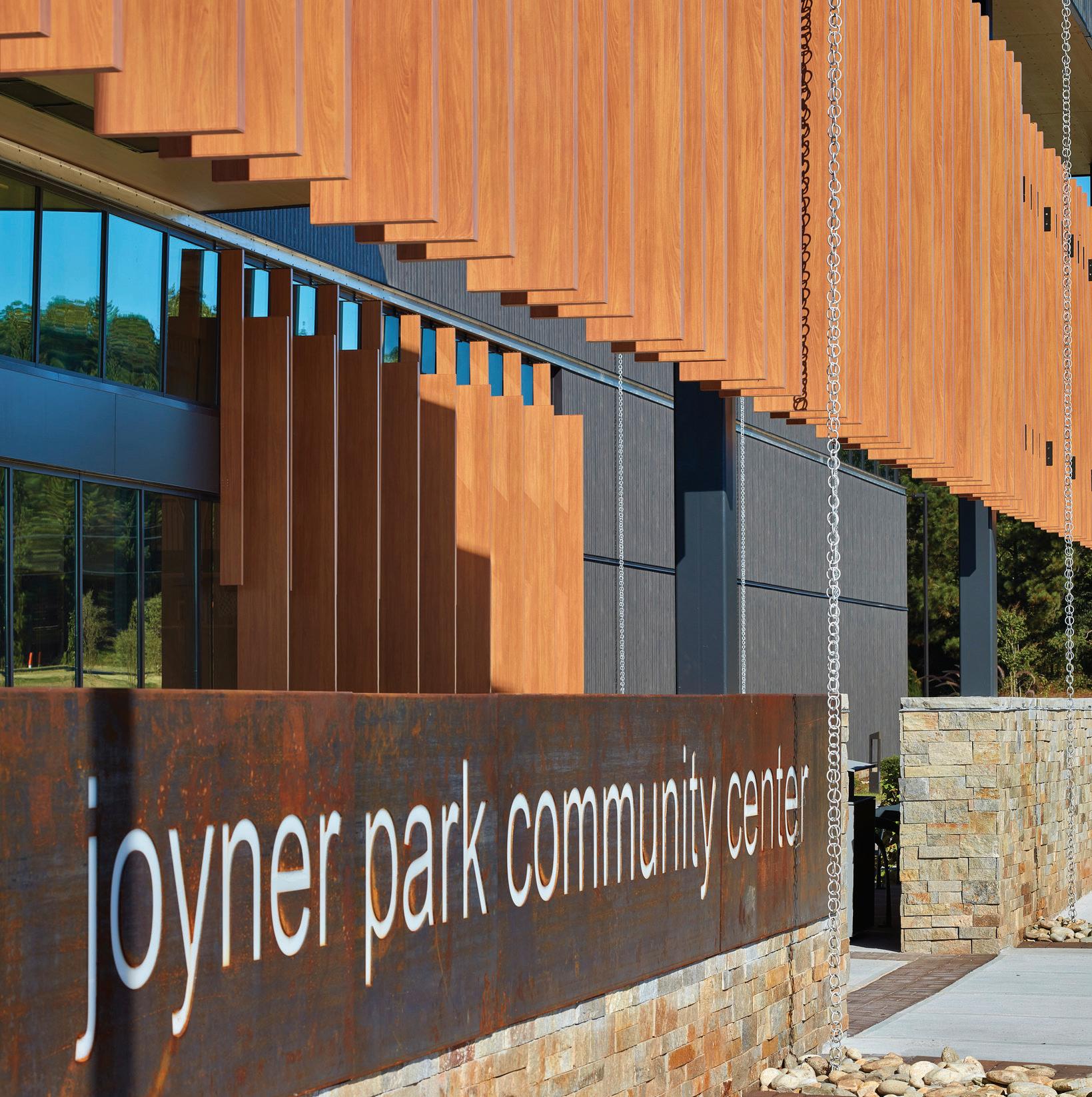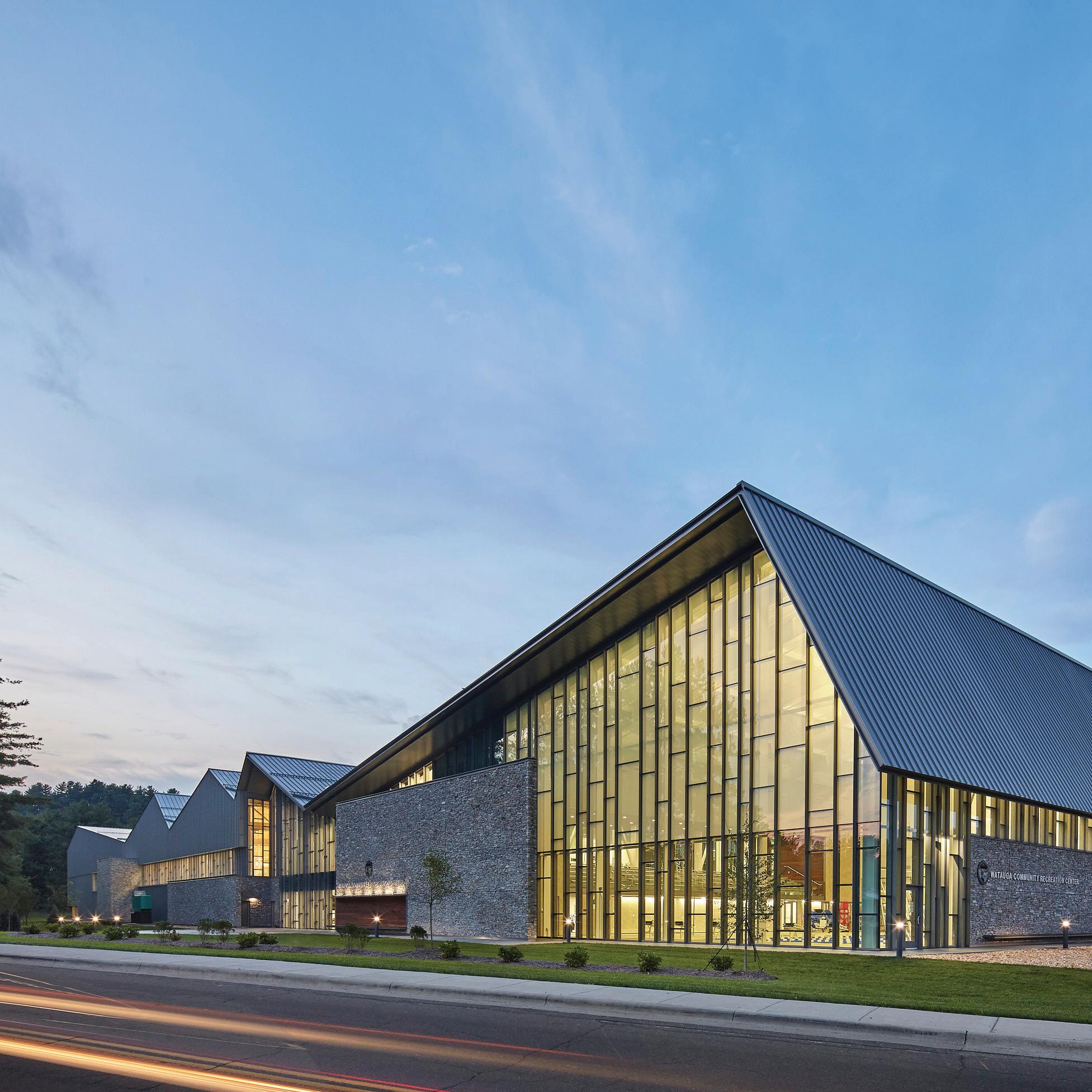
2 minute read
IMPROVING OUR SUSTAINABLE DESIGN PROCESS ACTION PLAN
Elevating Embodied Carbon
2022 Goals Achieved
• Committed to MEP 2040 Challenge initiated by the Carbon Leadership Forum
• Increased collaboration between the Clark Nexsen architecture and structural departments and completed an interdisciplinary Whole Building LCA.
• Performed embodied carbon LCA on four (4) projects as part of our continued commitment to SE 2050.
• Continued embodied carbon education opportunities via training (internal and external), along with broader engagement through attending and speaking at national conferences including at the I2SL International Conference, and moderating the Concrete Sustainability Panel at the 2022 SEA NC State Conference.
• Leveraged PID to track, visually analyze, and identify baseline data for embodied carbon reduction to track measurable progress and help identify projects that are ideal for LCA and GWP calculation
2023 Goals
• Further integrate AIA 2030, MEP 2040, and SE 2050 embodied carbon challenge efforts through quarterly meetings with the structural, mechanical and architecture groups.
• Use Tally plug-in to integrate default embodied carbon information into standardized Clark Nexsen Revit discipline project templates.
• Have two training sessions for LCA analysis of Tally and EC3 for interested designers in the spring and fall.
• Start a working group led by architects and interior designers to research material sustainable attributes. The group will develop Clark Nexsen Red list of materials that is a living document to be used as a company resource.
Elevating EUI and Project Performance
2022 Goals Achieved
• Created new full-time Building Science Practice Leader and Sustainability Leader positions within newly formed, firm-wide Sustainability Department.
Improving Our Sustainable Design Process Action Plan
• Worked on developing a Building Science business model that integrates within the firm projects and can be effectively used as a standard design service with a unique billing code.
• Started to strategically identify new projects in which early analysis can be used in parallel with goal setting to achieve high performance outcomes. Partnered with sustainability coordinators in each office to select these projects and connect with project team members.
• For AIA 2030, utilized Power BI reporting and the PID to review quarterly progress on logging performance goals and inputting AIA 2030 Challenge data. Input this data in real time as projects developed, so that annual reporting efforts were stream-lined.
2023 Goals
• Continue to utilize Power BI and the PID to review quarterly progress on logging performance goals and inputting AIA 2030 Challenge data. The goal is to input this data in real time as projects develop, so that annual reporting efforts are streamlined and better performance outcomes are achieved.
• In an effort to find new ways to track actual EUI, Clark Nexsen will start a dialogue with Duke Energy, the AIA, and the USGBC to look at ways to get access to actual EUI information in a more efficient manner from energy companies.
Improving Knowledge
2022 Goals Achieved
• Developed in-house “YouCube” videos on the latest sustainable design tools and resources and shared on the company intranet.
• Analyzed survey results to identify weak spots of knowledge to prepare for 2023 efforts on improving knowledge across firm in 2022.
• Developed a new draft for the sustainability library homepage.
• Continued to incentivize employees in getting certified in green building certifications (GBC, LEED, GG, WELL) to maximize firmwide green building knowledge.
• Updated the Orientation/Onboarding to include Sustainability orientation for all new staff.











